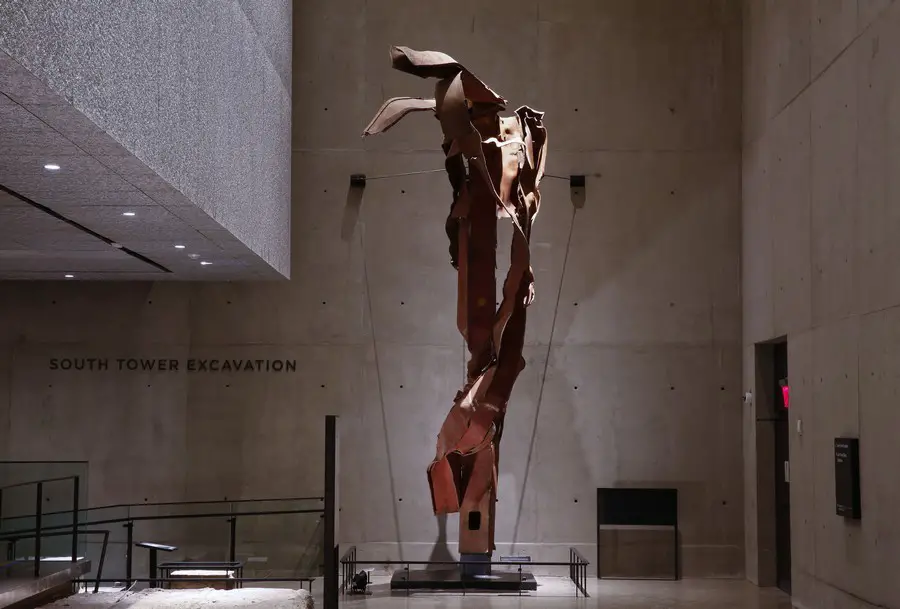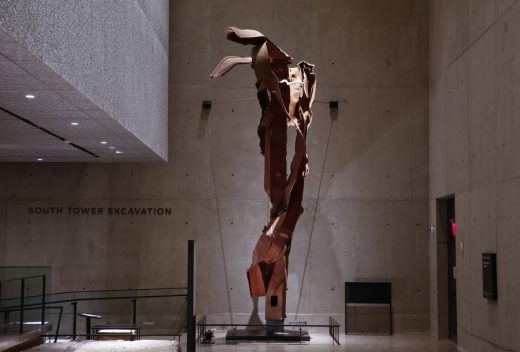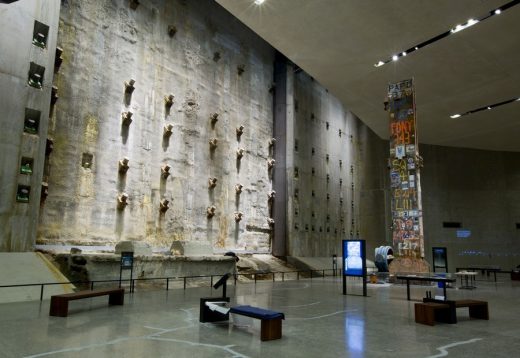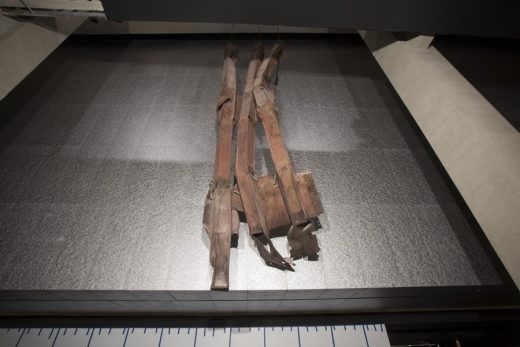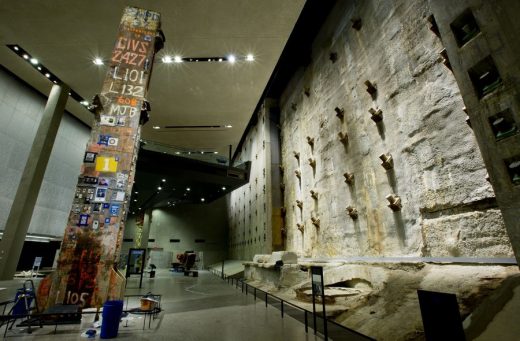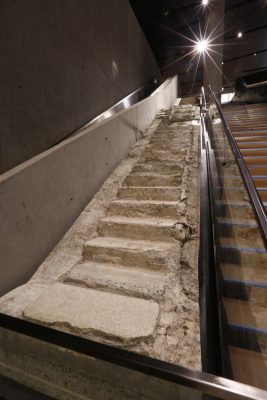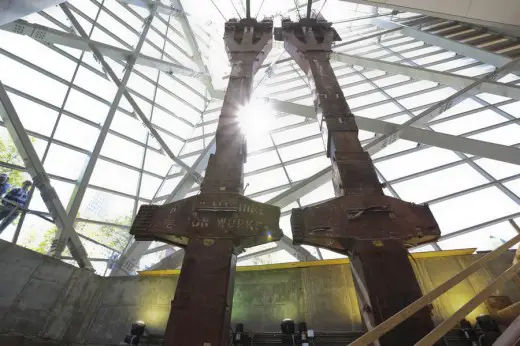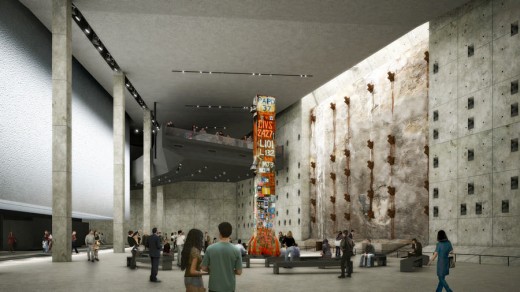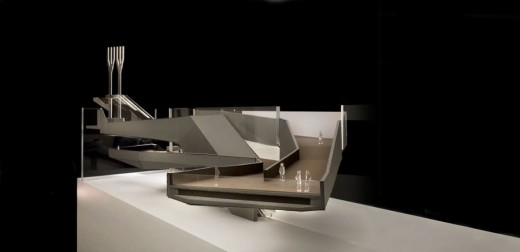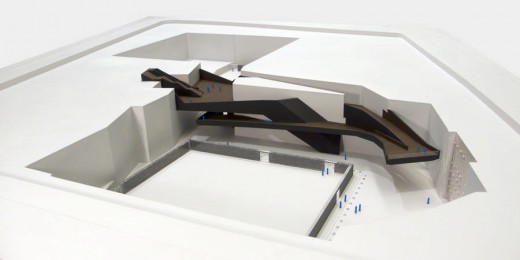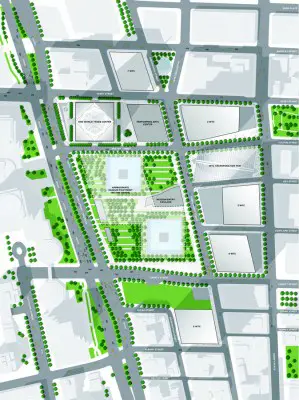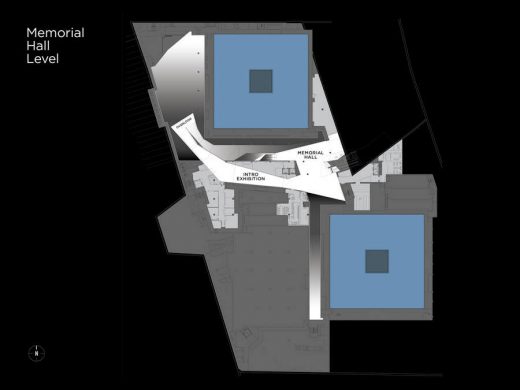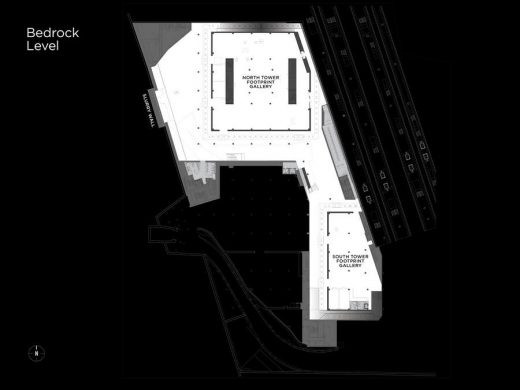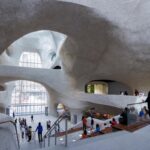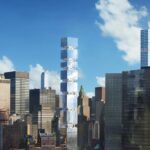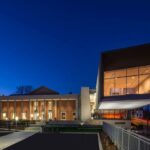9/11 Memorial Museum, New York Public Building, American Architecture Design
9/11 Memorial Museum, New York
Lower Manhattan Public Building Development design by Davis Brody Bond, NY, USA
post updated September 11, 2021 ; May 21, 2014
Marking 20 years anniversary since the 11 September attacks
Photography by Jin Lee
September 11th Memorial Building Opening 21 May 2014
September 11th Memorial Building in Lower Manhattan
The Museum was designed with four key principles in mind: memory, authenticity, scale, and emotion. Its architecture intends to provide the most sensitive, respectful, and informative experience for visitors.
The Museum is located beneath the 9/11 Memorial at the World Trade Center in lower Manhattan in New York.
The 9/11 Memorial Museum gives visitors a first-hand encounter with the site and artifacts at the actual location of the attacks. The artifacts range in scale from the monumental to the intimate, which the design had to accommodate.
One of the primary goals in the Museum’s design is to remind people what existed on the site before 9/11. Within the Museum, the inverted volumes of the original World Trade Center towers bring to memory their presence in the city.
21 Mar 2014
September 11th Memorial Building
Design: Davis Brody Bond
Location: Lower Manhattan, New York, USA
Opening in May 2014 and designed by Davis Brody Bond, the 9/11 Memorial Museum was conceived as the global focal point for presenting and preserving the history and memories of the events of 9/11, documenting the impact of the attacks and exploring their enduring significance. The Museum is located beneath the 9/11 Memorial at the World Trade Center in lower Manhattan in New York.
World Trade Center Tridents in the entry pavilion by Snøhetta
Descending nearly 70 feet to the original foundations of the World Trade Center towers, its 110,000 square-foot interior will give visitors access to the monumental underground site where remnants of the Trade Center’s construction and recovery frame the story of the terrorist attacks and the days that followed. Confronting the physical void left at the end of the recovery process, the spaces of the museum are revealed, progressively disclosing the various elements of collective and personal memory of the event.
“The architects of the Museum had to respond to a challenging set of physical conditions and preservation mandates. But, even more importantly, they also had to consider the sanctity of the site, which required an extraordinary understanding of how authenticity of place could impact visitors’ emotions,” said Alice M. Greenwald, Director of the 9/11 Memorial Museum. “We were extremely fortunate to work in partnership with Davis Brody Bond whose experience, sensitivity, and dedication have contributed immeasurably to the power of the Museum environment.”
Design Study for Foundation Hall featuring the Last Column
The design team at Davis Brody Bond inherited a fixed set of existing geometries at the site and was faced with the challenge of translating them into a series of coherent spaces that are punctuated by surface, texture, and volume. They chose as the Museum’s main narrative element a gently descending procession (dubbed “the Ribbon”) that guides visitors from the plaza to the bedrock level where the sheared base columns of the World Trade Center towers are revealed. The “Ribbon” recalls the ramp used to remove debris from the site in the aftermath of the attacks. It also offers multiple views of the slurry wall, the original retaining wall that was built to withstand the lateral forces of landfill and river, and which survived the collapse of the towers. At the end of the ribbon, the descent continues down along the Vesey Street Stairs (“Survivors’ Stairs”), which were used by hundreds to escape to safety on 9/11. It ultimately leads to two exhibition spaces and Foundation Hall, the Museum’s culminating space whose sheer scale conveys the enormity of the site and reinforces awareness of the absence of what once was there.
“The historic importance of the site and its symbolism made it essential for us to find a balance between the collective and the individual experience,” says Steven M. Davis, FAIA of Davis Brody Bond. “We relied on four principles to guide our work: memory, authenticity, scale and emotion, hoping to provide the most sensitive, respectful and informative experience for visitors.”
Close up of Model of the “Ribbon”
Memory – One of the primary goals in the design was to remind people what existed on the site before 9/11. The World Trade Center towers were fixtures on the New York City skyline and part of the daily life of hundreds of thousands of people. Within the Museum, the inverted volumes of the towers bring to memory their presence in the life of the city.
Authenticity – Few memorials occupy the site of the events they commemorate. The Museum is located where the attacks occurred and where the recovery process began. It gives visitors a first-hand encounter with the site. The artifacts also speak to this authenticity. Ranging in scale from the monumental to intimate, they include the slurry wall, the foundations and column bases at bedrock, as well as artifacts carefully selected during the recovery.
Scale – The World Trade Center was enormous, as was the impact of 9/11. The scale of the original building has been preserved and contributes to the impact of the visit. Foundation Hall is a cathedral-like space, a place of meditation. It is bordered on one side by the North Tower volume and on the other by the 60-foot slurry wall. It also houses the 58-ton steel “Last Column” that was ceremoniously removed from the site on May 30, 2002, marking the official end of the nine-month Ground Zero recovery effort.
Model of the “Ribbon”, the Ramp that Gently Descends and Guides Visitors from the Plaza to the Bedrock Level
Emotion – How visitors will experience the Museum has been a significant consideration in its design. The design ensures that visitors, when confronting subjects of emotional intensity, includes areas that allow and promote moments of solemnity and contemplation.
“Almost all of the Museum’s visitors have memories of the events of 9/11, and many will also remember the Twin Towers and their presence in the city,“ said Carl Krebs, AIA. “We want people to have the time and opportunity to reconnect with these thoughts and memories as they begin their visit to the Museum. The gradual procession down to bedrock along the “Ribbon” is intended to be a contemplative experience.”
Materials – The Museum employs three basic materials: concrete, aluminum, and wood. The careful use and juxtaposition of these humble materials creates an environment that evokes both the raw character of the site and the period of recovery, yet also provides tactile elements that are familiar and comfortable to the visitor.
Entry – Visitors enter the Museum through a pavilion located between the Memorial’s two reflecting pools on the plaza. It includes a private space for 9/11 victims’ families and a small auditorium. The Museum’s entry pavilion was designed by Snøhetta.
Public Spaces – Visitors descend from the entry pavilion to Memorial Hall where they experience a first view of the larger space that reaches to bedrock and proceed through an introductory exhibit and past a series of iconic artifacts.
Exhibition Spaces – The primary exhibition spaces at bedrock provide visitors with historic and educational content about the events. These areas are located on the footprints of the Twin Towers, directly below the Memorial Plaza’s reflecting pools. The North Tower footprint area will house a historical exhibition; the south footprint area contains a memorial exhibition, education center, and excavation of the original structure. Thinc Design with Local Projects, LLC served as the lead exhibition designers. The historical exhibition was designed by Layman Design.
overlook level plan:
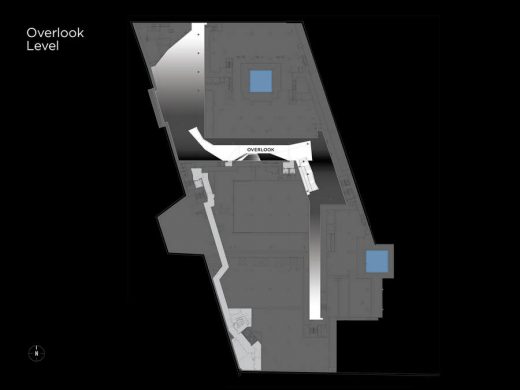
Design Team – Davis Brody Bond is the design architect of the 9/11 Memorial Museum. Davis Brody Bond Partners Steven M. Davis, FAIA, and Carl F. Krebs, AIA, have been involved with the project since its inception in 2004. Steven M. Davis also developed the Public Space Master Plan for the World Trade Center in 1992 and Carl F. Krebs was the Partner-in-Charge for Davis Brody Bond’s participation in the development of the 9/11 Memorial.
The 9/11 Memorial, at the plaza level, was designed by Michael Arad and Peter Walker and Partners. Davis Brody Bond served as associate architect of the Memorial.
9/11 Memorial Museum images / information from Davis Brody Bond
Davis Brody Bond Architects and Planners
Location: Lower Manhattan, New York City, USA
9/11 Architecture
Contemporary 9/11 Architectural Designs
World Trade Center New York
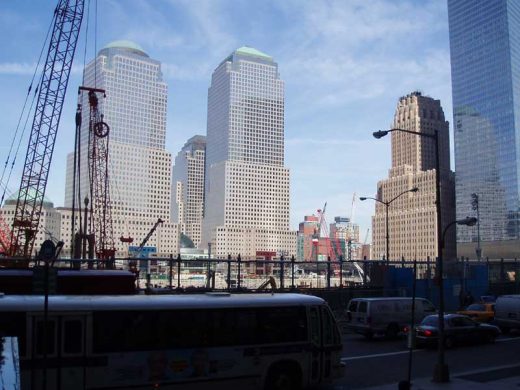
photo : Andrew McRae
World Trade Center New York
Pentagon 9/11 Memorial Visitors Center, Arlington, Virginia, United States of America
Design: Fentress Architects
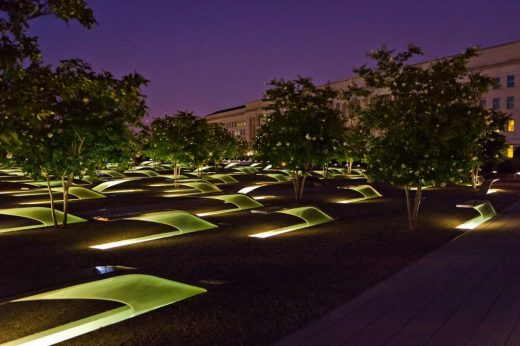
image courtesy of architects practice
9/11 Pentagon Memorial Visitor Education Center
WTC, New York City
World Trade Center Towers New York
New York City Architecture
Contemporary New York Buildings
NYC Architecture Designs – chronological list
New York Building News – recent selection below:
Dock 72 Brooklyn Navy Yard Building
Architecture: S9 Architecture ; Interior Design: Fogarty Finger
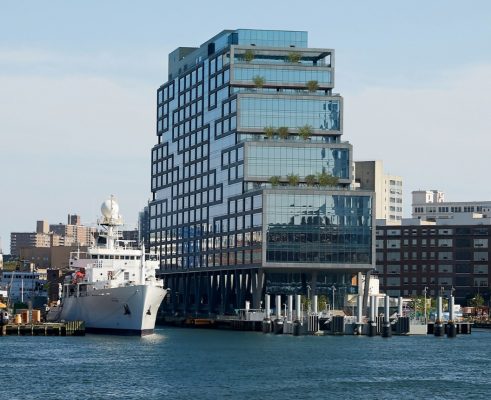
image courtesy of architects practice
Dock 72 Brooklyn Navy Yard
TWA Flight Center – architectural award news
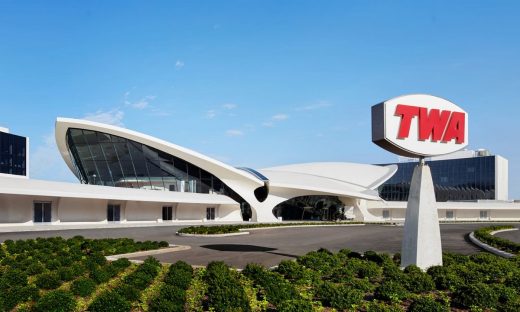
photo courtesy TWA Hotel and by David Mitchell
TWA Hotel, John F Kennedy Airport
The Smile Harlem Housing
Architects: BIG
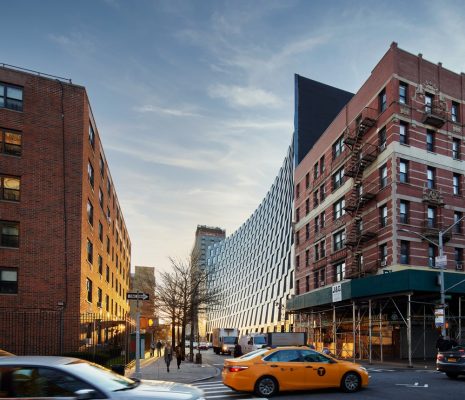
photo : Thomas Loof and Pernille Loof
The Smile Harlem Housing by BIG
NYC Architectural Designs
New York City Architectural Tours by e-architect
Richard Meier & Partners : information on the architect
New York State Architecture Designs
Comments / photos for the 9/11 Memorial Museum – New York Architecture page welcome

